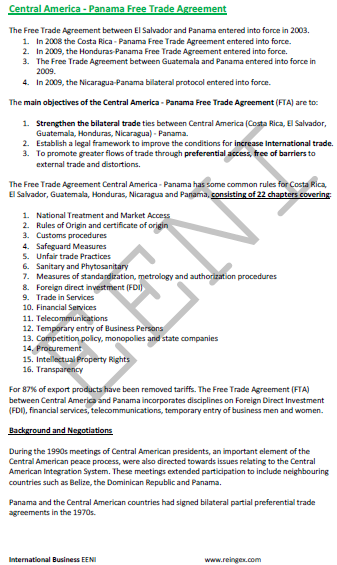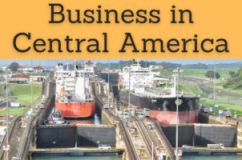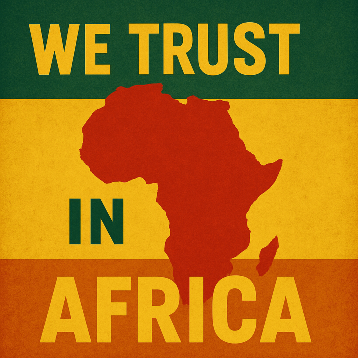Central America-Panama Free Trade Agreement
Free Trade Agreement between Costa Rica, El Salvador, Guatemala, Honduras, Nicaragua, and Panama
- Introduction to the Central America-Panama Free Trade Agreement
- Advantages of the Agreement Panama-Central America
- Certification and Rules of Origin
- Foreign Trade between Central America and Panama
- Case Study: Foreign Trade of Costa Rica and Nicaragua with Panama
- Bilateral Protocol to the Free Trade Agreement between Costa Rica and Panama
Sample - Central America-Panama Free Trade Agreement (FTA)


The Subject “Free Trade Agreement between Central America and Panama” is included within the curriculum of the following academic programs at EENI Global Business School:
Masters: International Business, Foreign Trade.

Languages: 
 Centro America Panama
Centro America Panama  Amerique Centrale
Amerique Centrale  América Central.
América Central.


The objectives of the Central America-Panama Free Trade Agreement are to:
- Strengthen bilateral trade ties between Central America (Costa Rica, El Salvador, Guatemala, Honduras, and Nicaragua) and Panama
- Establish a legal framework to improve the conditions for increase Foreign Trade
- To promote a greater trade flows through preferential access, free of Technical Barriers to Trade (TBT) and distortions
The Free Trade Agreement between El Salvador and Panama entered into force in 2003.
- In 2008, the Costa Rica-Panama Free Trade Agreement entered into force
- In 2009, the Honduras-Panama Free Trade Agreement entered into force
- The Free Trade Agreement between Guatemala and Panama entered into force in 2009
- In 2009, the Nicaragua-Panama bilateral protocol entered into force
The Central America-Panama Free Trade Agreement has some common rules for Costa Rica, El Salvador, Guatemala, Honduras, Nicaragua, and Panama, consisting of twenty-two chapters covering:
- National Treatment and Market Access
- Rules of Origin and certificate of origin
- Customs Procedures
- Safeguard Measures
- Unfair Trade Practices
- Sanitary and Phytosanitary Measures
- Measures of standardization, metrology and authorization procedures
- Foreign Direct Investment (FDI)
- Trade in Services
- Financial Services
- Telecommunications
- Temporary entry for business persons
- Competition Policy, monopolies and state companies
- Procurement
- Intellectual Property Rights (IPR)
- Transparency
(c) EENI Global Business School (1995-2025)
Top of this page











 WhatsApp
WhatsApp